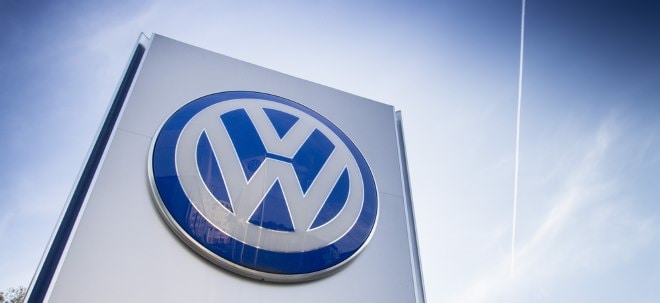Toll Brothers vs. D.R. Horton: Which Homebuilder Stock Has More Upside?
Werte in diesem Artikel
Toll Brothers TOL and D.R. Horton DHI are two leading U.S. homebuilders with distinct market focuses. Toll Brothers is famed for its luxury homes and affluent customer base, while D.R. Horton is America’s largest homebuilder, dominating the entry-level and affordable housing segment. Despite a challenging housing backdrop of high mortgage rates and cautious consumer sentiment, both companies have delivered solid performances recently. Their stocks have held up well year to date, and in fact, both shares have rallied sharply over the past few months. This common resilience makes them an interesting pair to compare – especially now, when the U.S. housing market is at a crossroads of tight supply and shifting macroeconomic conditions.Let’s dive deep and closely compare the fundamentals of the two stocks to determine which one is a better investment now.The Case for Toll Brothers StockToll Brothers has sustained steady momentum, anchored by its luxury niche and affluent clientele. The company’s high-income customer base shields it from rate sensitivity, with about 26% of the fiscal third-quarter buyers paying cash and financed buyers averaging just 70% loan-to-value. Average selling prices (ASPs) remain strong, exceeding $1 million, while backlog ASP stands at $1.16 million. This resilience in pricing and margins provides stability even as broader housing demand fluctuates.A strategic shift to a 50/50 mix of spec and build-to-order homes has enhanced flexibility. With 3,200 spec homes under construction and 1,800 permits in hand, Toll Brothers can quickly scale when conditions improve. Spec homes accelerate delivery yet still offer curated customization options. The move has also shortened cycle times, with 35% of communities now completing builds in eight months or less, improving delivery visibility and revenue timing.Backlog remains a key support, with 5,492 homes worth $6.4 billion at the end of the fiscal third quarter. Active communities totaled 420, with plans to grow to 440–450 by year-end, up 8–10%. This expansion strengthens the platform for fiscal 2026 orders, underpinned by land positions in growth markets across the Mid-Atlantic, South, and North regions. Land spend was $433 million in the fiscal third quarter, bringing lots owned and controlled to 76,800. Importantly, 57% are secured via capital-efficient structures, balancing growth with risk management.The balance sheet adds another layer of stability. Net debt-to-capital is 19.3%, backed by $852 million in cash and $2.2 billion of available credit. Toll Brothers expects $1 billion in fiscal 2025 operating cash flow and continues to reward shareholders, returning $226 million at the end of the fiscal third quarter and targeting $600 million in full-year repurchases alongside dividends.Still, challenges persist. While mortgage rates eased to about 6.3%, buyer hesitation lingers, slowing deposit-to-contract conversions. Net contracts fell 4% year over year, with dollar value flat due to higher ASPs. Cycle times remain longer in 65% of communities, particularly larger custom homes. Costs are another hurdle, as land development, labor, and insurance remain elevated. SG&A will rise in the fiscal fourth quarter amid a surge in community openings, while incentives ticked up to 8% from 7% last quarter, reflecting more discounting on finished spec homes.The Case for D.R. Horton StockD.R. Horton continues to benefit from its unmatched scale, operating across 36 states and more than 120 markets. This scale not only provides cost advantages but also ensures better lot control, supported by its lot development arm. Importantly, it allows the company to adjust its product mix toward more affordable homes, which remain the strongest area of demand in today’s constrained affordability environment.The company’s disciplined, returns-driven model underscores its resilience. In the fiscal third quarter, Horton closed 23,160 homes and delivered a gross margin of 21.8%, surpassing guidance, while maintaining a low cancelation rate. Management stressed its ability to balance pricing and sales pace, aided by its broad geographic diversification. A 12% year-over-year increase in community count highlights continued investment and expansion. At the same time, D.R. Horton has introduced smaller homes and reduced square footage to meet affordability needs, drawing strong buyer adoption. Coupled with flexible incentives—such as FHA mortgage buydowns at 3.99%—these adjustments have kept buyer traffic steady.Operational efficiency is another growth driver. D.R. Horton improved construction cycle times by several days sequentially and nearly two weeks year over year. This efficiency reduced reliance on higher spec inventory, with completed spec homes falling by 1,100 sequentially. Faster cycle times enhance cash flow and allow quicker responses to demand shifts. Backing this momentum is D.R. Horton’s deep lot position of around 600,000, with 24% owned and 76% controlled, supported by its strategic relationship with Forestar. Strong liquidity of $5.5 billion, leverage of 23.2%, and a 7% increase in book value per share to $80.46 further strengthen its financial flexibility.However, affordability pressures remain a central challenge. Elevated mortgage rates and cautious consumer sentiment are forcing D.R. Horton to lean more heavily on incentives, which are eroding margins. Management expects the fiscal fourth quarter home sales margins to contract by about 50 basis points sequentially, reflecting these higher costs. While the fiscal third-quarter gross margin held flat at 21.8%, the impact of rising incentives in backlog will weigh on near-term profitability. In addition, SG&A expenses grew 2% year over year, climbing to 7.8% of revenue, as lower average selling prices—down 3% to $369,600—limit leverage. These factors underscore the delicate balance D.R. Horton must strike between sustaining demand and protecting margins.Share Price Performance of TOL and DHI StocksTOL stock is up by roughly low-double-digits percentage year to date (rising 11%), modestly outperforming the Zacks Building Products - Home Builders industry but lagging the S&P 500 index.Meanwhile, DHI stock has rallied impressively in the short term, climbing about 20.4% year to date, outperforming the industry and the S&P 500 index.DHI stock surged roughly 30.8% in the last three months alone, much above TOL’s rally of 24.2% during the same period.YTD Share Price PerformanceImage Source: Zacks Investment ResearchValuation of TOL & DHI StocksToll Brothers’ forward 12-month price/earnings (P/E) ratio is 9.96– lower than DHI stock’s 13.98X. Investors appear to be giving D.R. Horton a premium for its market leadership and anticipating a future rebound.Meanwhile, its return on equity is a healthy 17.4%, higher than D.R. Horton’s 15.7%, which signals efficient use of capital.Image Source: Zacks Investment ResearchTOL & DHI EPS Estimate Revision TrendFor TOL, the Zacks Consensus Estimate for fiscal 2025 earnings per share (EPS) has decreased over the past 30 days to $13.82, as you can see below, depicting analysts’ concern. The estimated figure indicates a 7.9% decline from the year-ago reported EPS of $15.01. The Zacks Consensus Estimate for 2025 revenues implies year-over-year growth of 0.1%.For TOL StockImage Source: Zacks Investment ResearchFor DHI stock, analysts are growing increasingly optimistic about its earnings potential. Over the past 60 days, the Zacks Consensus Estimate for DHI’s fiscal 2025 EPS has increased to $11.79 per share, reflecting a positive shift in sentiment. The estimated figure depicts a 17.8% year-over-year decline. The Zacks Consensus Estimate for fiscal 2025 revenues implies a year-over-year decline of 7.6%.For DHI StockImage Source: Zacks Investment ResearchWhich Stock Has More Upside?In conclusion, while both Toll Brothers and D.R. Horton have demonstrated resilience in a tough housing environment, the near-term risk-reward tilts more favorably toward Toll Brothers. D.R. Horton’s scale, breadth, and leadership in affordable housing keep it a long-term powerhouse, but its reliance on incentives, shrinking ASPs and margin pressure temper its upside in the current affordability-strained market. By contrast, Toll Brothers’ affluent customer base, pricing strength (ASP for contracts signed was up 4.5% from a year ago and up 3% versus last quarter), backlog resilience and margin profile provide a stronger cushion against macro volatility. Its disciplined capital allocation and balance sheet flexibility further enhance shareholder value potential.With both stocks trading at a Zacks Rank #3 (Hold), investors are right to approach with measured expectations. Yet, when weighing downside protection against upside potential, Toll Brothers appears better positioned to capture incremental gains as mortgage rates ease and demand stabilizes. Toll Brothers offers the stronger near-term upside opportunity relative to D.R. Horton. You can see the complete list of today’s Zacks #1 Rank (Strong Buy) stocks here.Free Report: 3 Software Stocks Poised to SkyrocketSoftware stocks are poised to catapult higher in the coming months (and years) thanks to several factors, especially the explosive growth of AI. Zacks' urgent report reveals 3 top software stocks to own right now.Access the report free today >>Want the latest recommendations from Zacks Investment Research? Today, you can download 7 Best Stocks for the Next 30 Days. Click to get this free report Toll Brothers Inc. (TOL): Free Stock Analysis Report D.R. Horton, Inc. (DHI): Free Stock Analysis ReportThis article originally published on Zacks Investment Research (zacks.com).Zacks Investment ResearchWeiter zum vollständigen Artikel bei Zacks
Übrigens: Toll Brothers und andere US-Aktien sind bei finanzen.net ZERO sogar bis 23 Uhr handelbar (ohne Ordergebühren, zzgl. Spreads). Jetzt kostenlos Depot eröffnen und Neukunden-Bonus sichern!
Ausgewählte Hebelprodukte auf Toll Brothers
Mit Knock-outs können spekulative Anleger überproportional an Kursbewegungen partizipieren. Wählen Sie einfach den gewünschten Hebel und wir zeigen Ihnen passende Open-End Produkte auf Toll Brothers
Der Hebel muss zwischen 2 und 20 liegen
| Name | Hebel | KO | Emittent |
|---|
| Name | Hebel | KO | Emittent |
|---|
Quelle: Zacks
Nachrichten zu Toll Brothers Inc.
Analysen zu Toll Brothers Inc.
| Datum | Rating | Analyst | |
|---|---|---|---|
| 23.08.2019 | Toll Brothers Neutral | Seaport Global Securities | |
| 22.10.2018 | Toll Brothers Hold | Deutsche Bank AG | |
| 23.05.2018 | Toll Brothers Underweight | Barclays Capital | |
| 17.01.2018 | Toll Brothers Buy | UBS AG | |
| 29.12.2017 | Toll Brothers Neutral | Wedbush Morgan Securities Inc. |
| Datum | Rating | Analyst | |
|---|---|---|---|
| 17.01.2018 | Toll Brothers Buy | UBS AG | |
| 25.10.2017 | Toll Brothers Buy | UBS AG | |
| 13.07.2017 | Toll Brothers Outperform | RBC Capital Markets | |
| 11.04.2017 | Toll Brothers Outperform | RBC Capital Markets | |
| 24.02.2016 | Toll Brothers Buy | MKM Partners |
| Datum | Rating | Analyst | |
|---|---|---|---|
| 23.08.2019 | Toll Brothers Neutral | Seaport Global Securities | |
| 22.10.2018 | Toll Brothers Hold | Deutsche Bank AG | |
| 29.12.2017 | Toll Brothers Neutral | Wedbush Morgan Securities Inc. | |
| 23.02.2017 | Toll Brothers Sector Perform | RBC Capital Markets | |
| 06.01.2017 | Toll Brothers Equal Weight | Barclays Capital |
| Datum | Rating | Analyst | |
|---|---|---|---|
| 23.05.2018 | Toll Brothers Underweight | Barclays Capital | |
| 25.02.2015 | Toll Brothers Underperform | RBC Capital Markets | |
| 11.12.2014 | Toll Brothers Underperform | RBC Capital Markets | |
| 14.12.2011 | Toll Brothers sell | Stifel, Nicolaus & Co., Inc. | |
| 14.03.2011 | Toll Brothers sell | Stifel, Nicolaus & Co., Inc. |
Um die Übersicht zu verbessern, haben Sie die Möglichkeit, die Analysen für Toll Brothers Inc. nach folgenden Kriterien zu filtern.
Alle: Alle Empfehlungen

